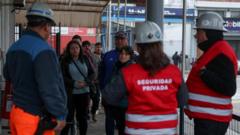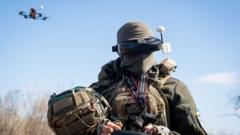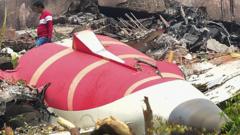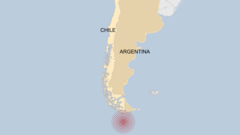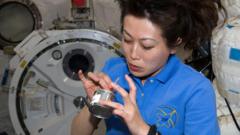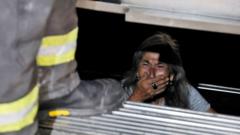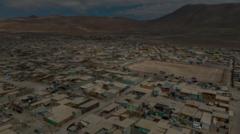The Vera Rubin Observatory's debut images reveal stunning nebulae and hint at discoveries about dark matter and potential new planets.
**Unveiling the Cosmos: The Vera Rubin Telescope Launches into Orbit of Discovery**
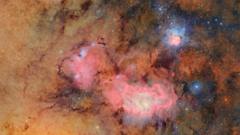
**Unveiling the Cosmos: The Vera Rubin Telescope Launches into Orbit of Discovery**
A groundbreaking telescope in Chile unveils its first celestial images, promising a new era in astronomical exploration.
In an extraordinary leap for space science, the Vera Rubin Observatory in Chile has made headlines with its first captivating images, revealing the vibrant Trifid and Lagoon nebulae. This state-of-the-art telescope, equipped with the world's most advanced digital camera, is set to revolutionize our comprehension of the cosmos.
The remarkable photograph showcases a star-forming region located approximately 9,000 light years from Earth, swirling with colorful clouds of gas and dust. Experts anticipate that the telescope's powerful capabilities could lead to the discovery of a hypothetical ninth planet within our solar system within its inaugural year, as well as identifying hazardous asteroids that pose threats to Earth.
The observational potential of the Vera Rubin Observatory extends far beyond merely cataloging celestial objects. It aims to conduct a comprehensive 10-year survey of the southern night sky, significantly enhancing our understanding of underlying cosmic phenomena such as dark matter, which constitutes a majority of the universe’s mass. Professor Catherine Heymans, Astronomer Royal for Scotland, expressed her excitement, noting that her two-decade effort culminated in this vital facility for astronomical study.
The UK plays a pivotal role as a crucial partner in the project, operating data centers designed to process the exceptionally detailed images gathered by the telescope. The Vera Rubin observatory, strategically located on Cerro Pachón in the Andes, benefits immensely from its high elevation, dry atmosphere, and minimal light pollution, ensuring optimal observation conditions.
Inside the observatory, extensive measures work constantly to maintain darkness, allowing the telescope's vast mirrors—an intricately designed trio of primary, secondary, and tertiary—to operate efficiently. Each mirror's cleanliness is paramount; even a minuscule speck of dust could compromise image quality. These mirrors allow light from the universe to be captured in unprecedented detail.
Vera Rubin's camera, boasting an impressive 3,200 megapixels (67 times the resolution of the latest smartphone), captures images every 40 seconds over an observation period of eight to twelve hours each night. This capability enables it to create a Legacy Survey of Space and Time, producing a vast array of data alerts that will refine our understanding of the universe's structure and dynamics.
As researchers embark on scrutinizing this converging data stream, anticipated to peak at 10 million alerts nightly, they will focus on key cosmic phenomena: transient sky changes, Milky Way formation, solar system mapping, and dark matter studies. The telescope's relentless observation strategy is particularly groundbreaking, as it will continuously monitor the same areas, alerting scientists to any significant changes detected.
In addition to propelling scientific discovery, this extraordinary telescope will also enhance planetary defense against potential threats like asteroids that may stray close to Earth. High sensitivity within the camera's design means detecting even the faintest of cosmic emissions, paving the way for better tracking of celestial objects.
With ambitions to unravel historic mysteries about our solar system, including the existence of Planet Nine—believed to be situated far beyond conventional observational reaches—Vera Rubin stands poised to reshape our comprehension of the cosmos. "Understanding how this remarkable observatory operates will take time, but the potential for discovery is exhilarating," says Professor Heymans, reflecting the collective anticipation of the astronomical community for what lies ahead.

